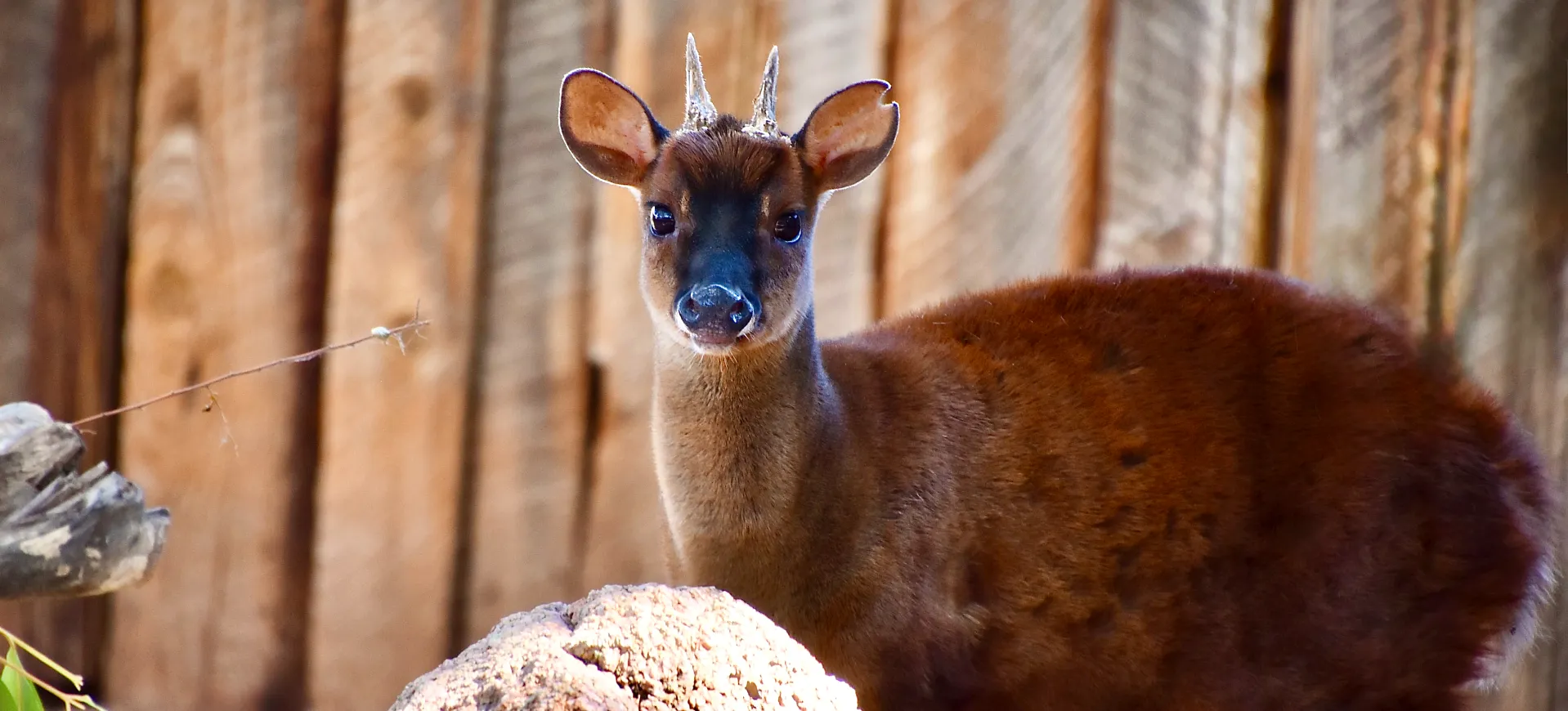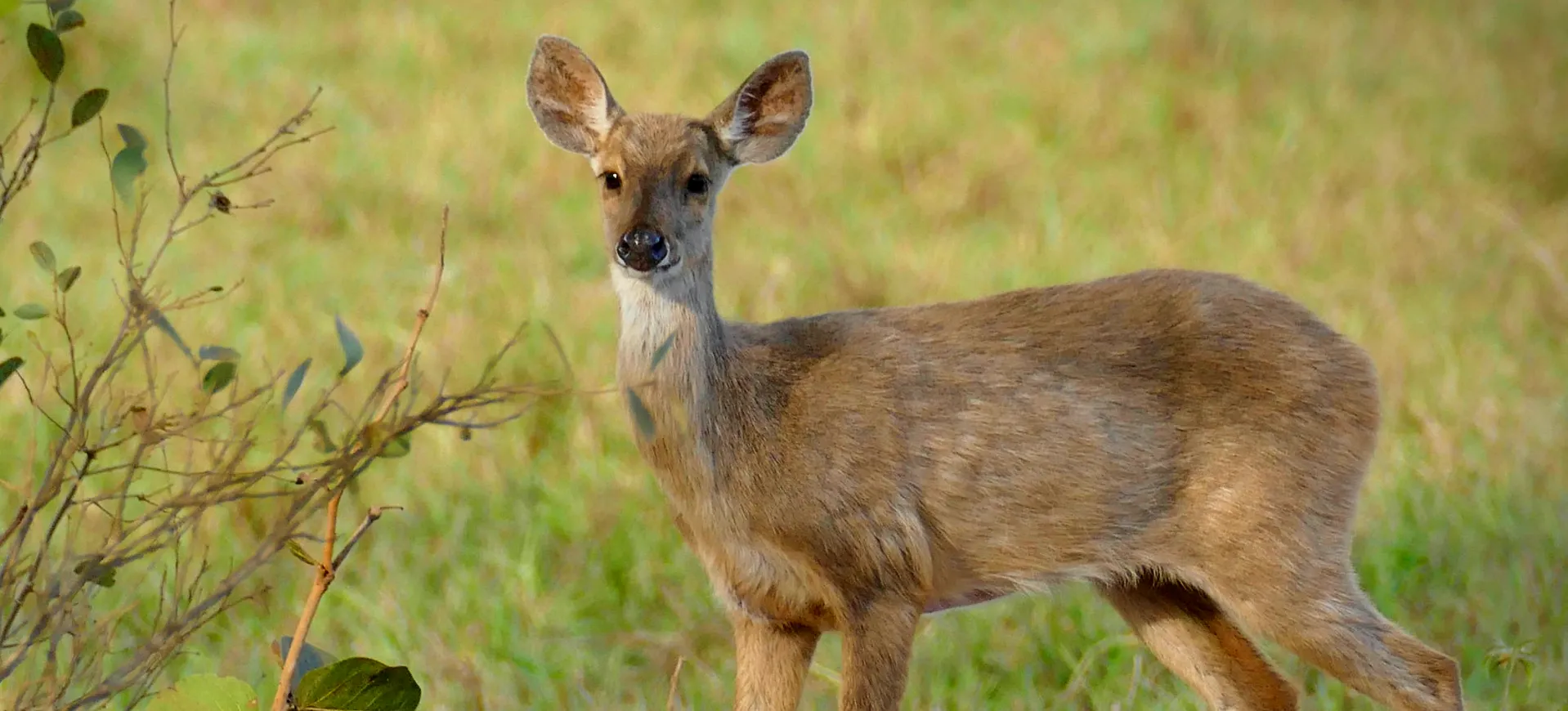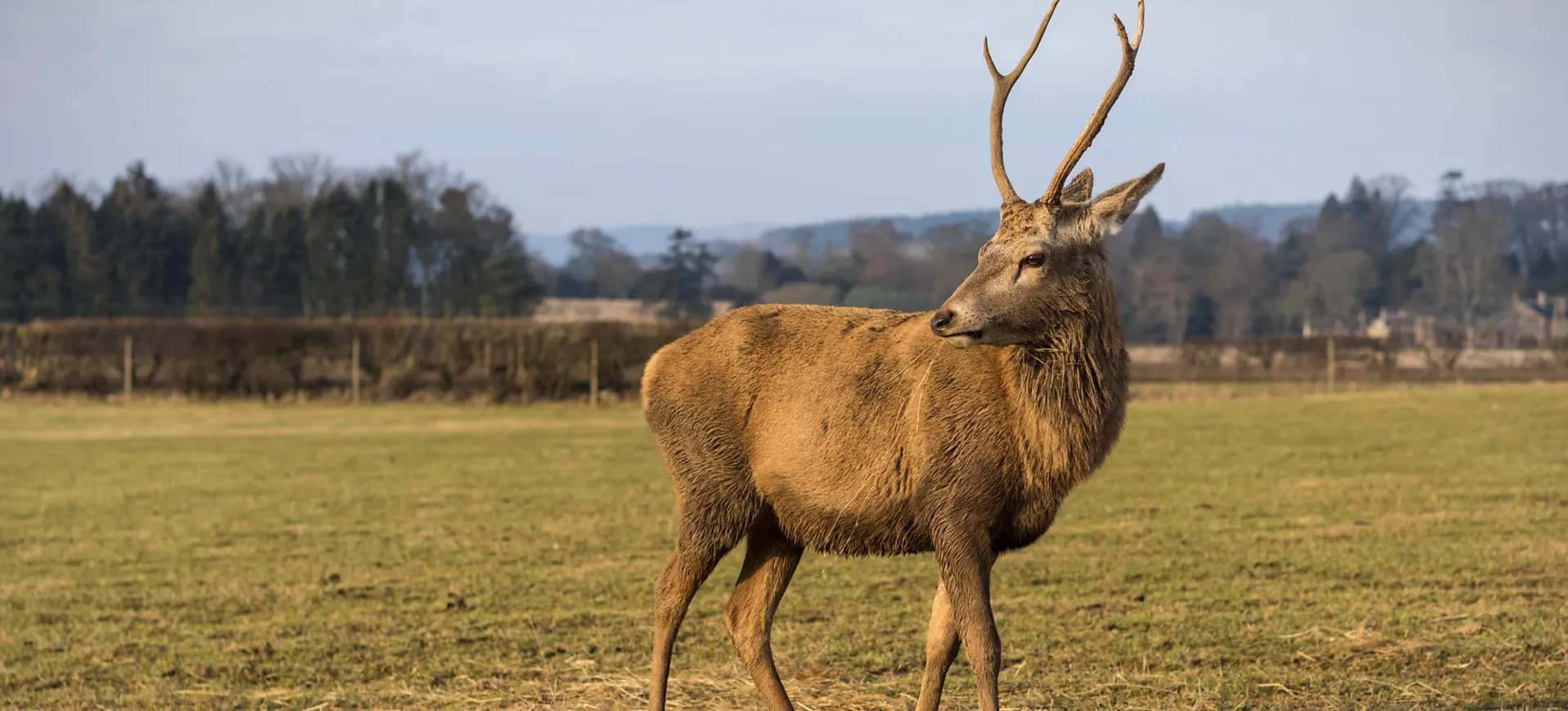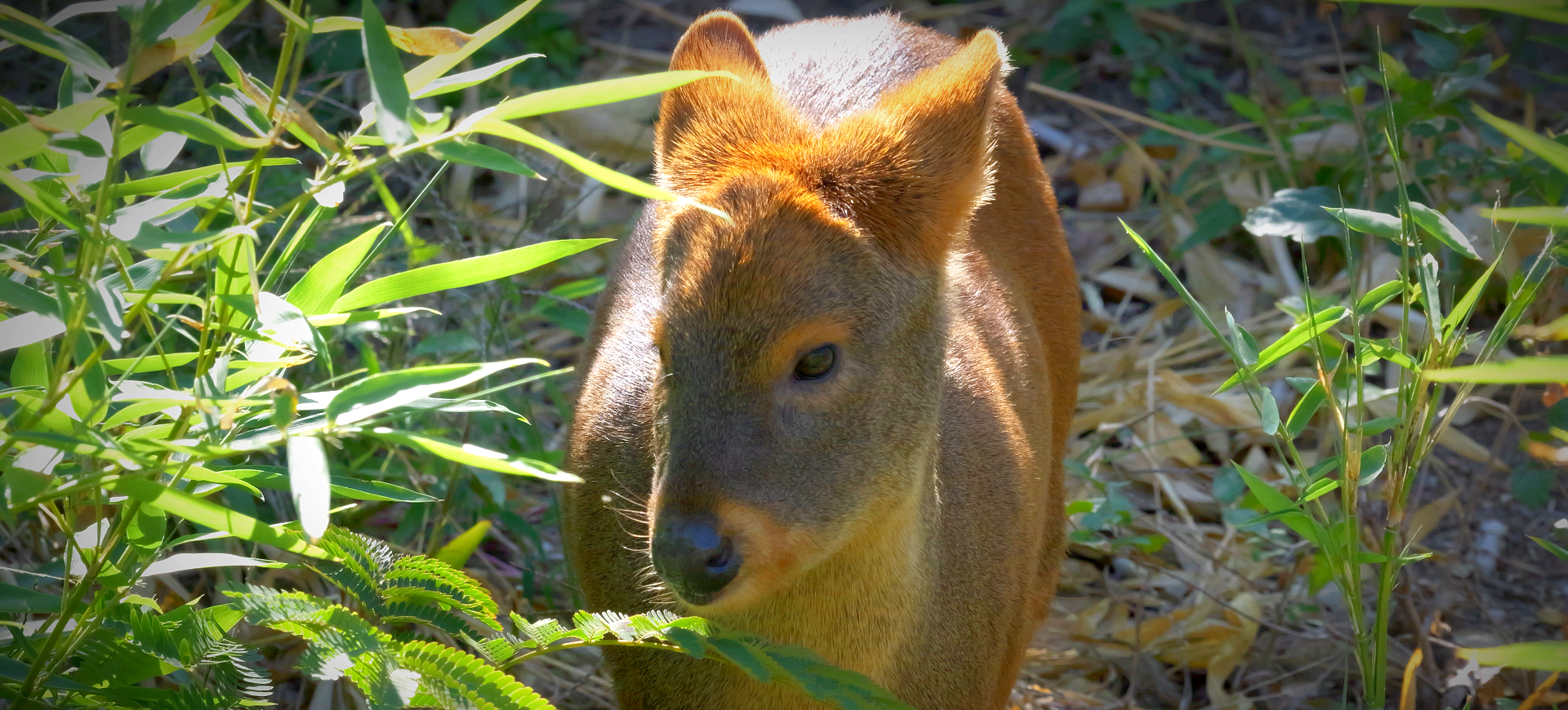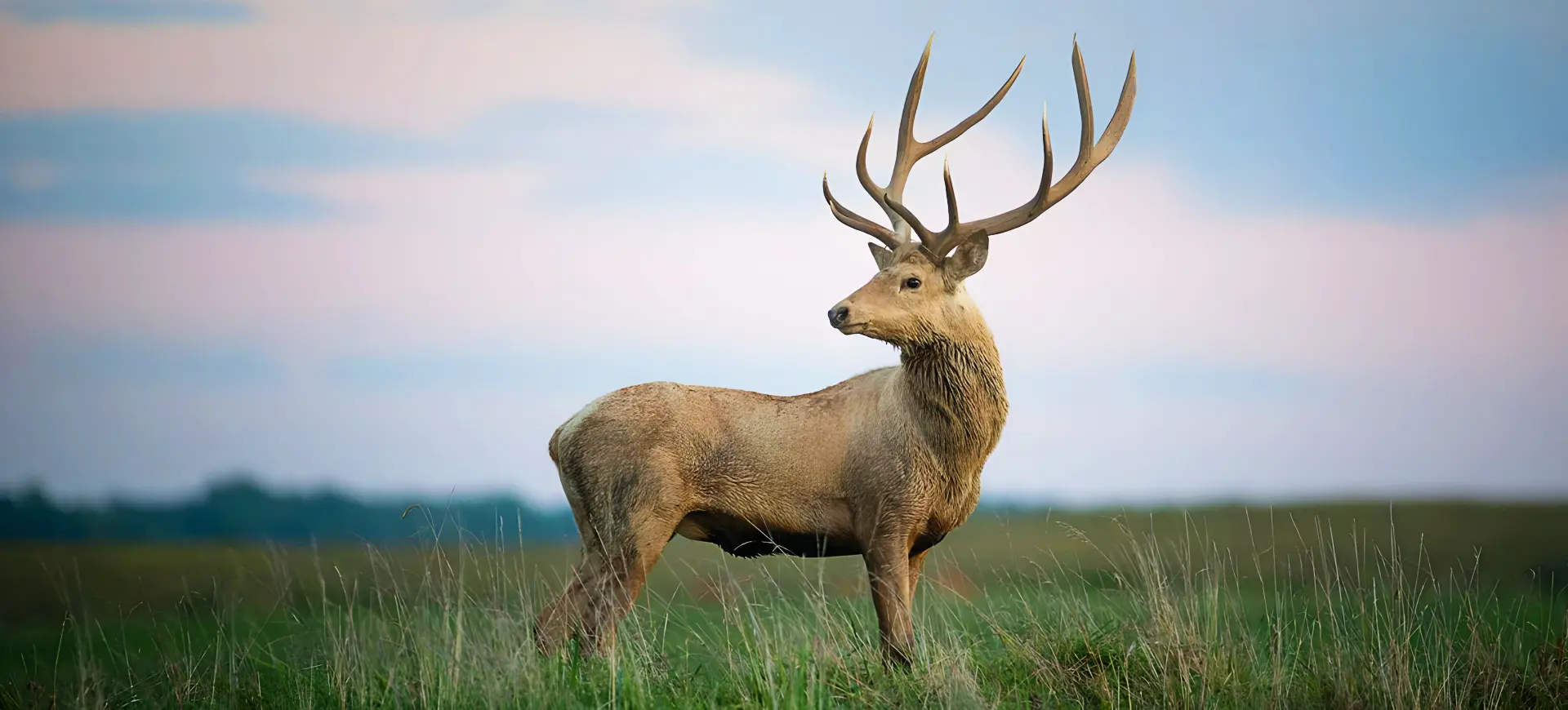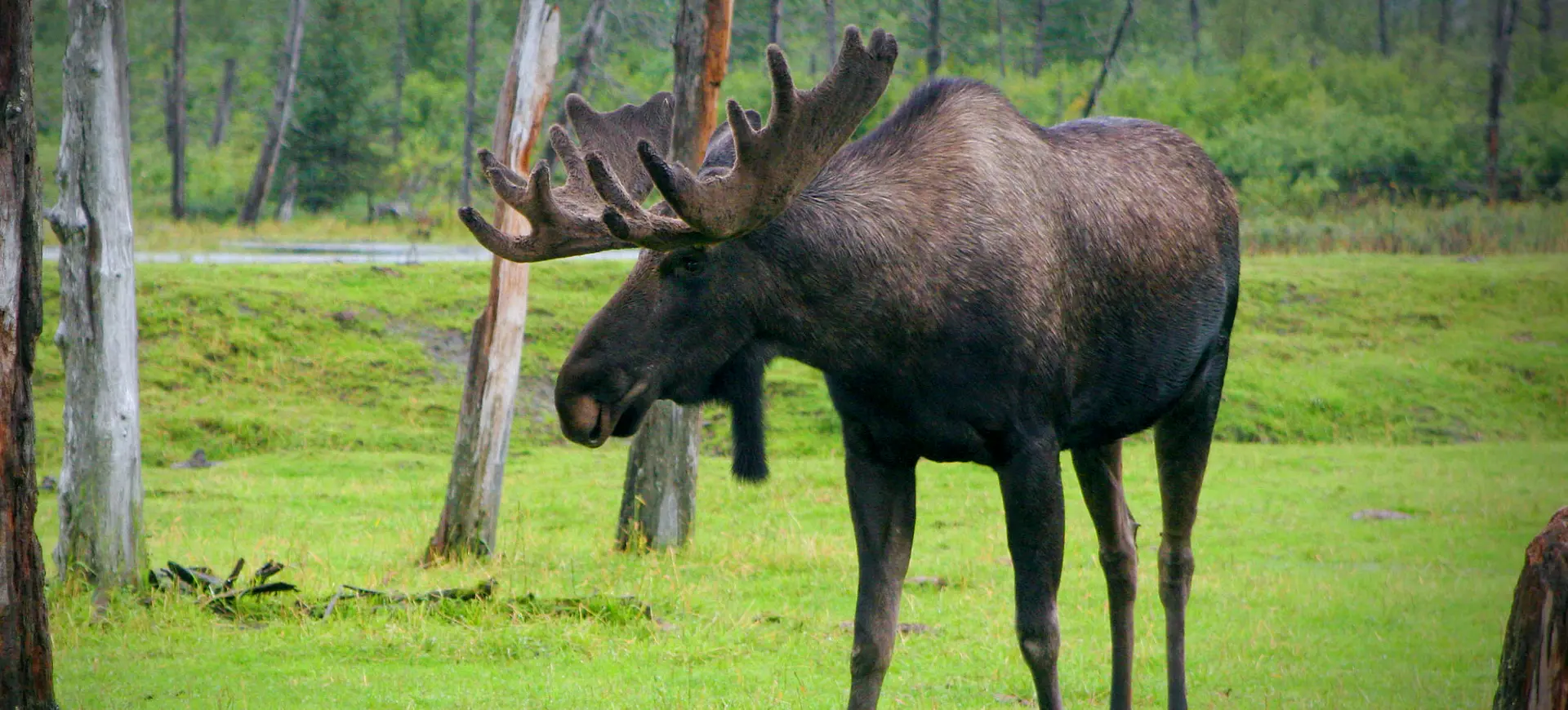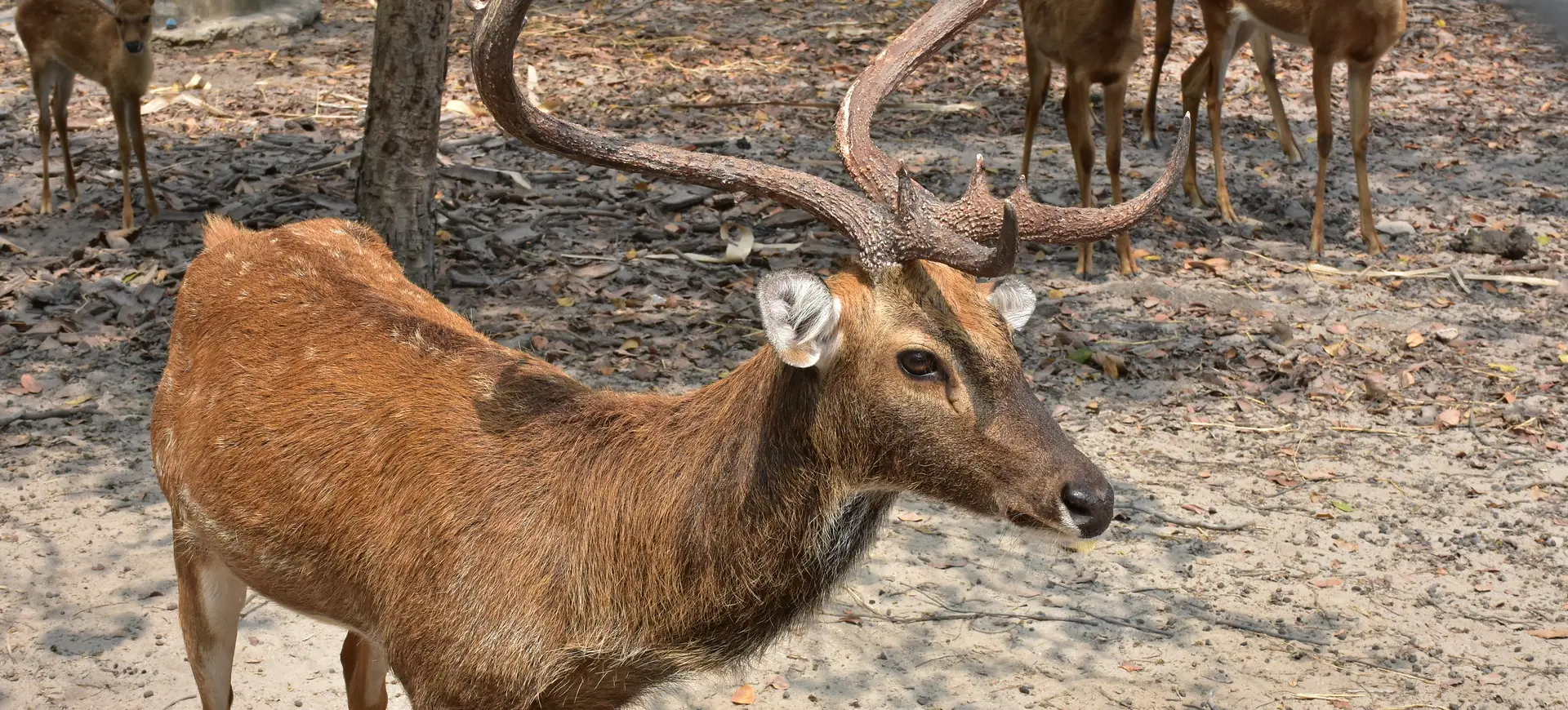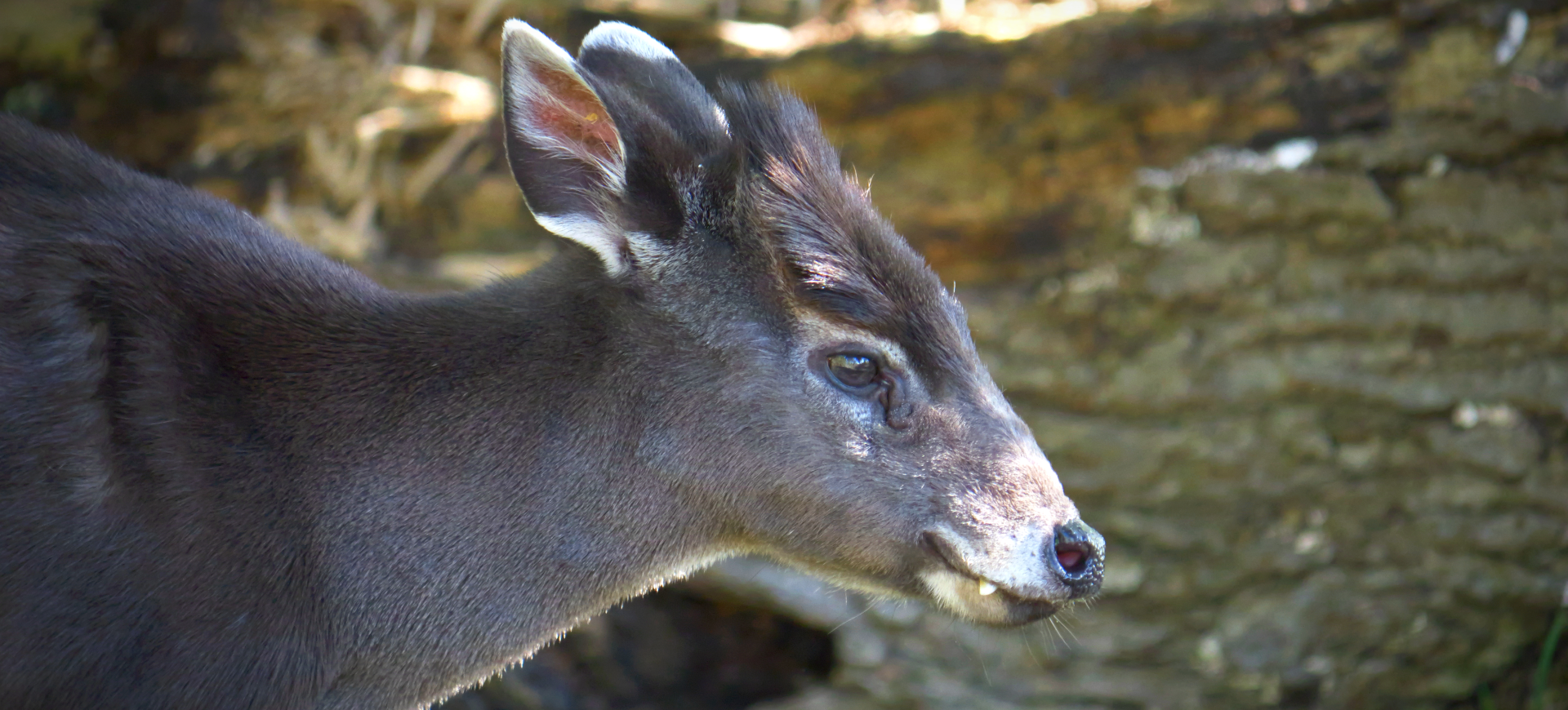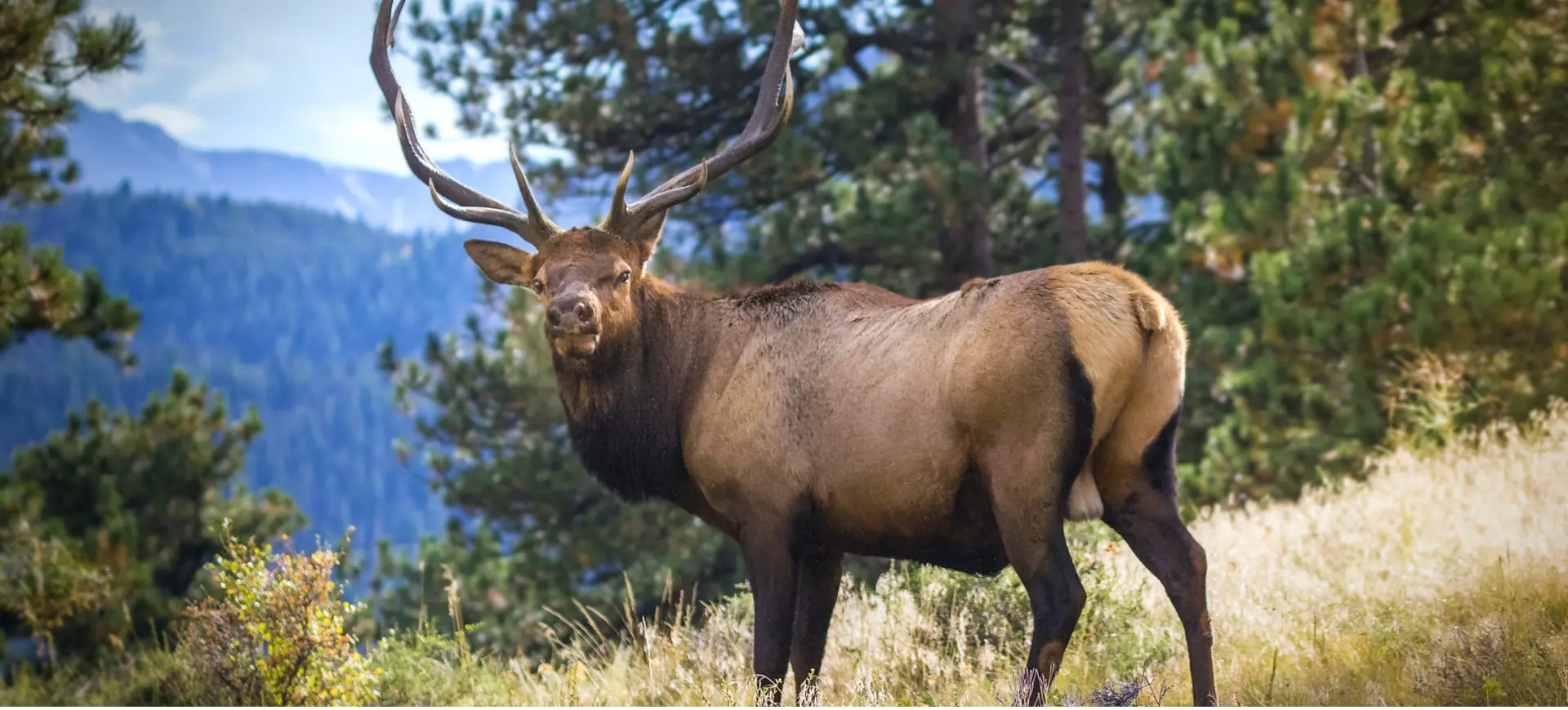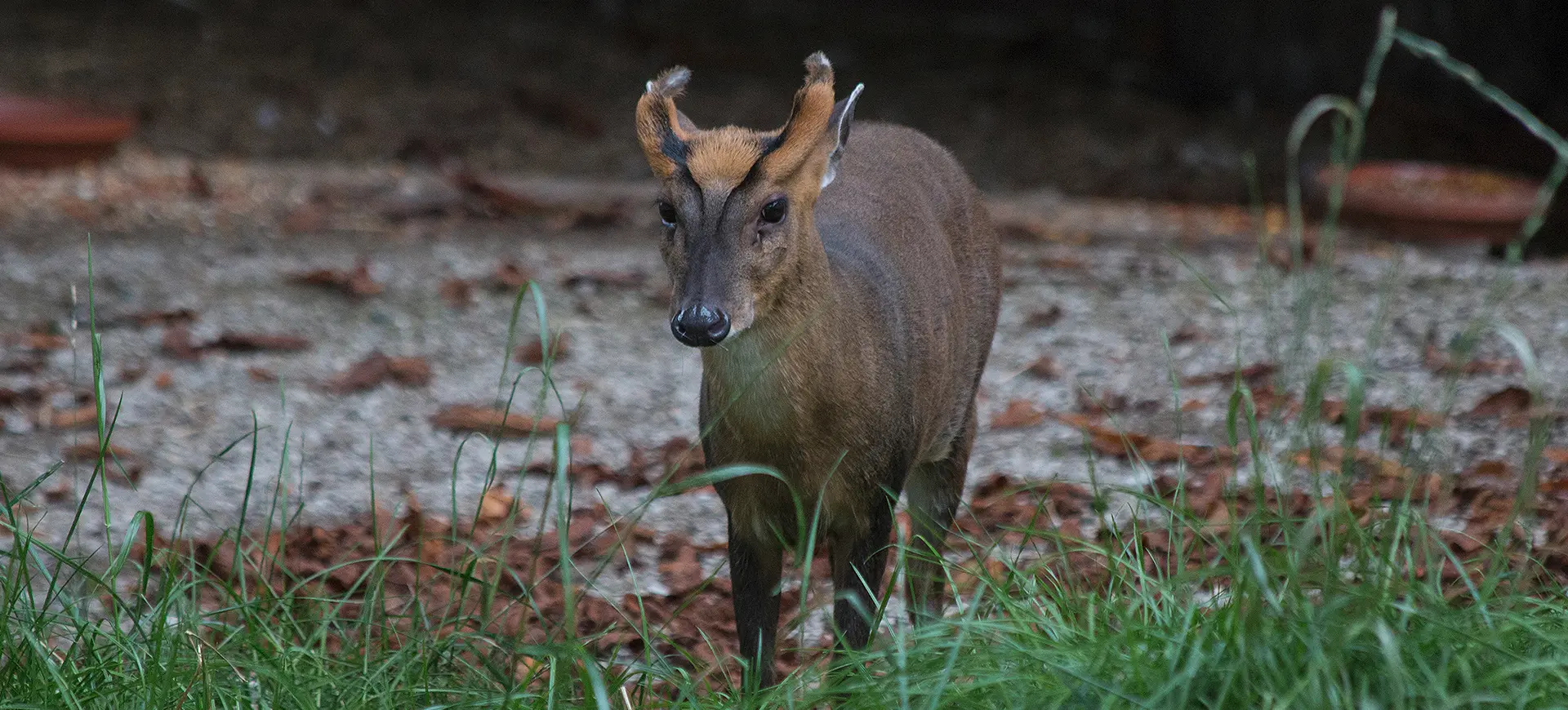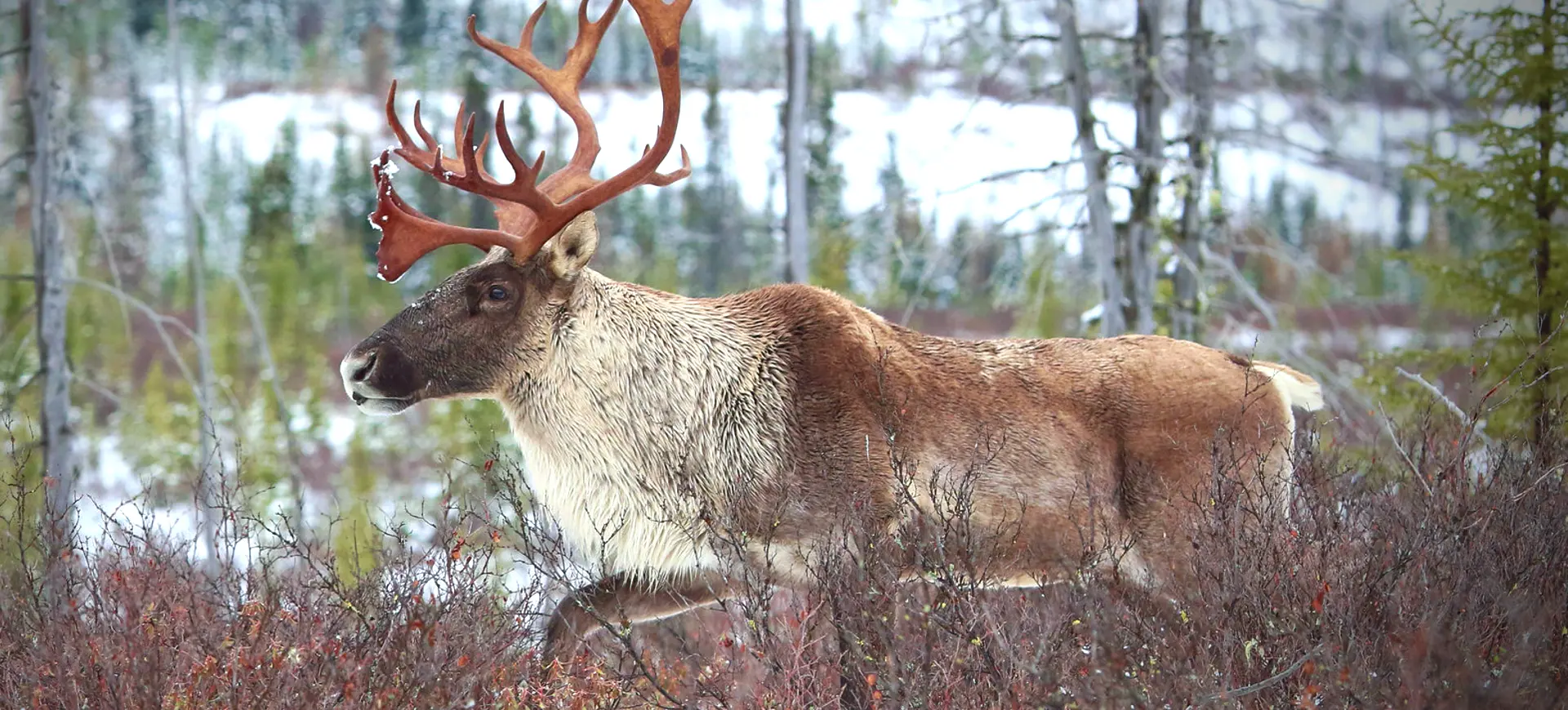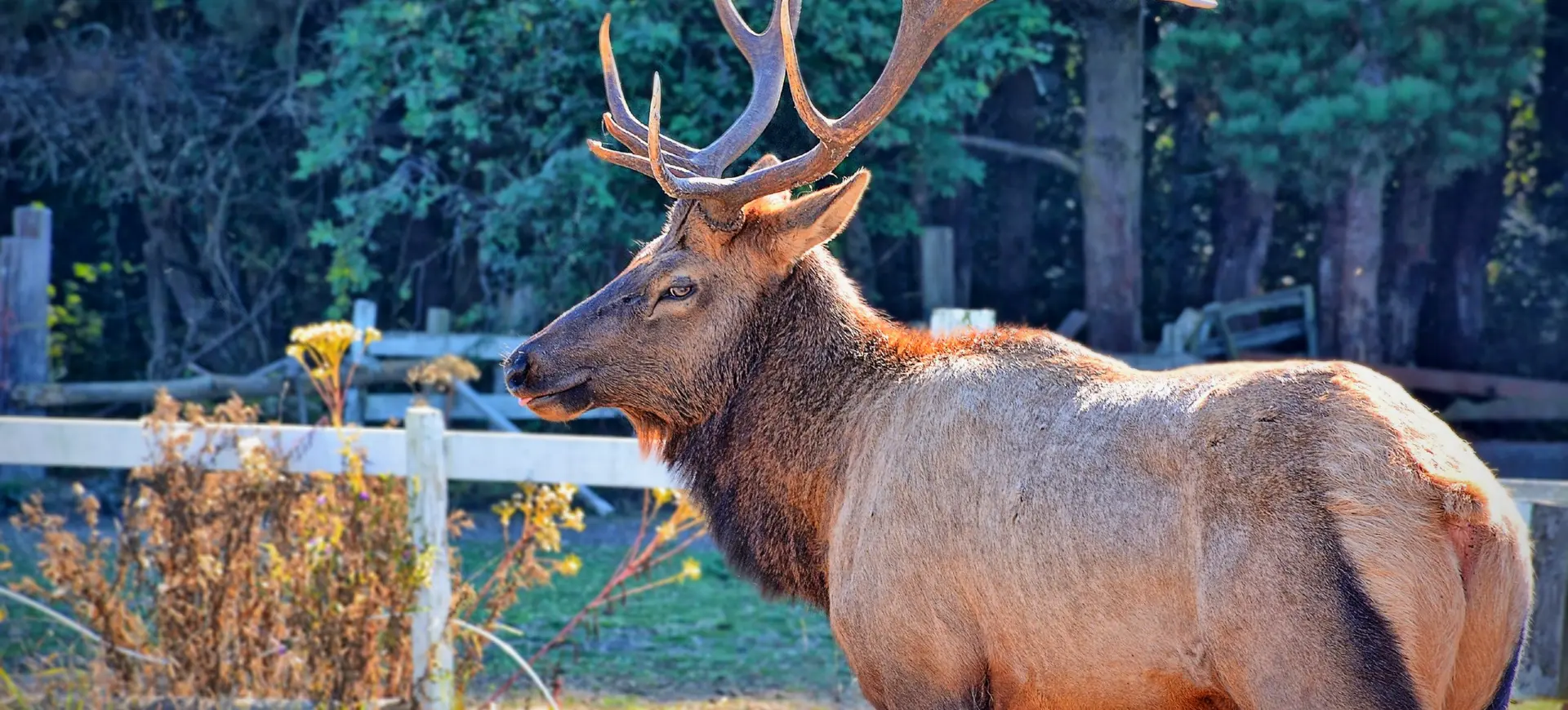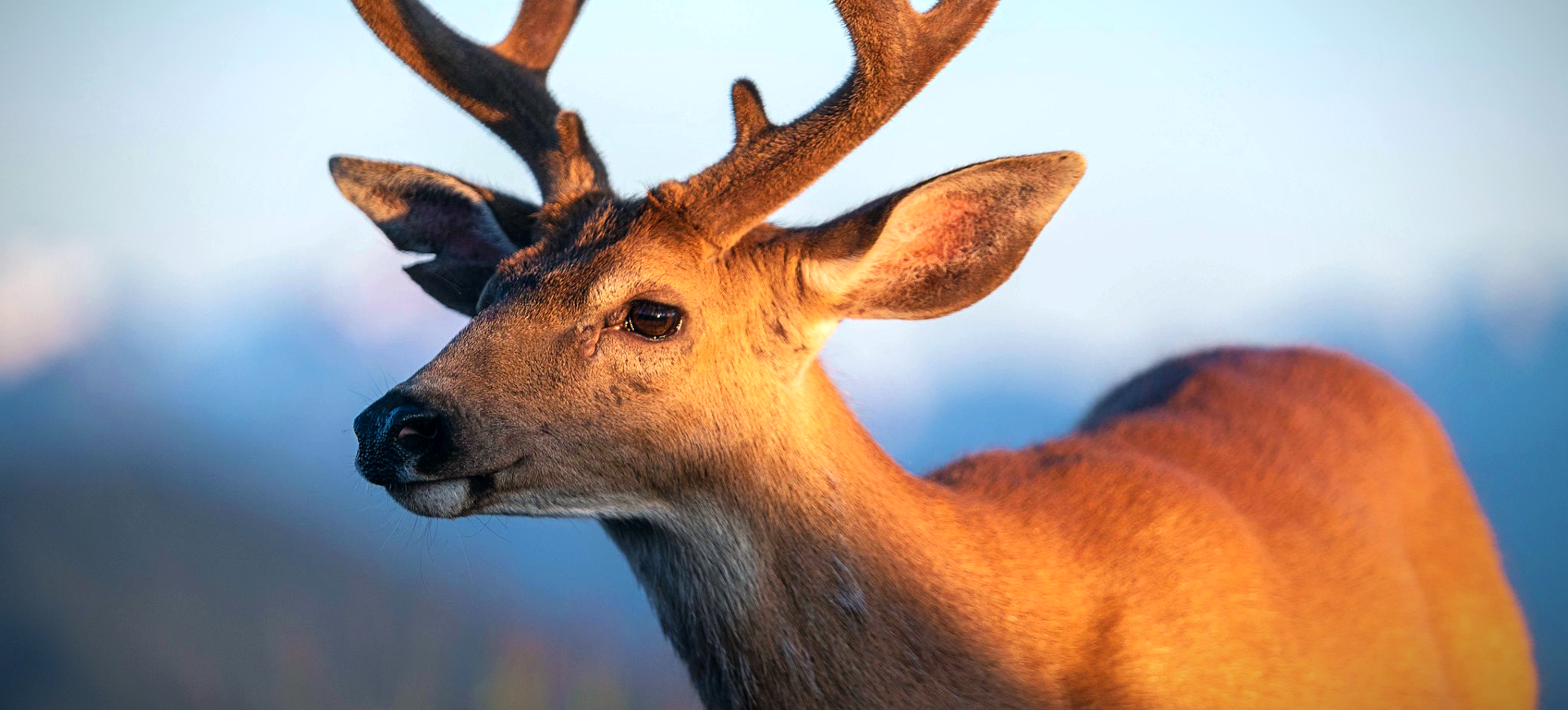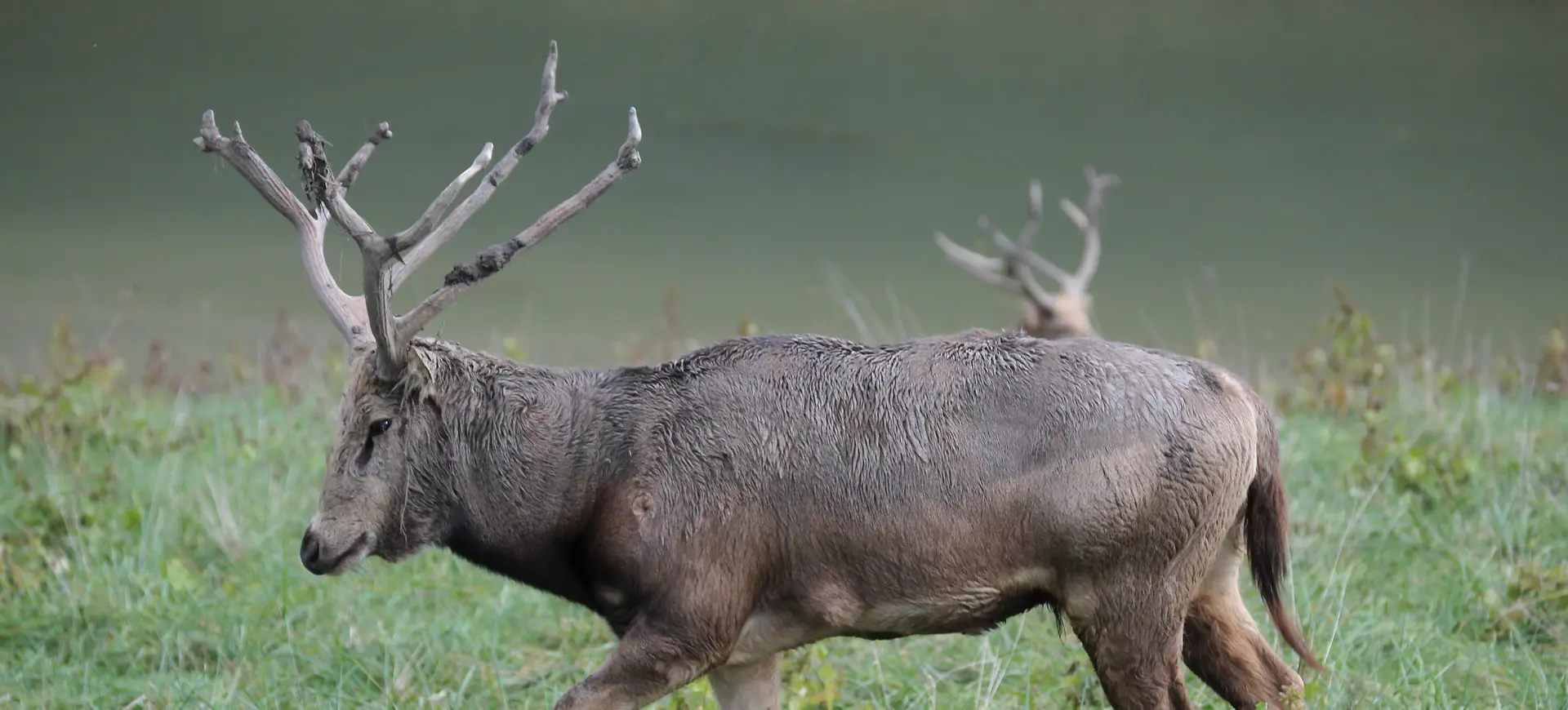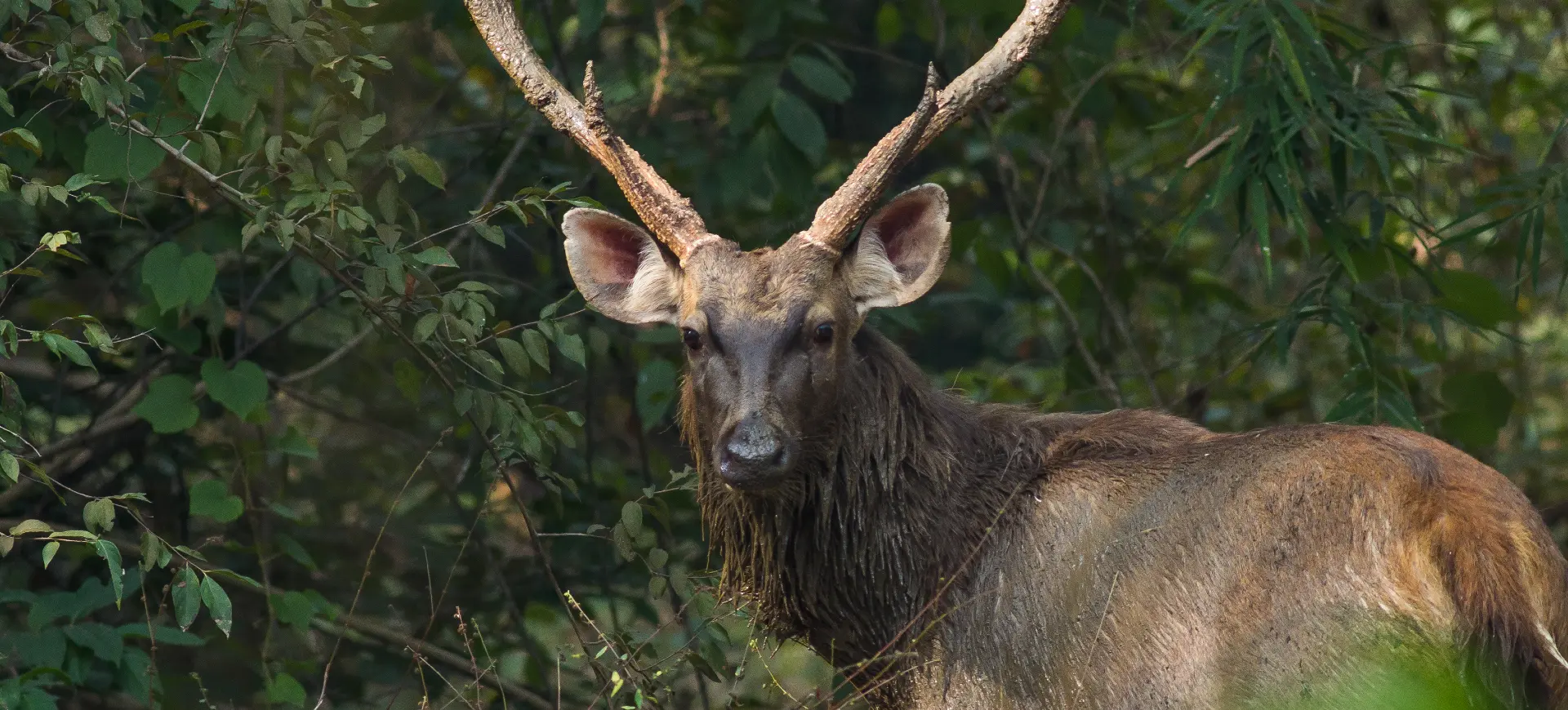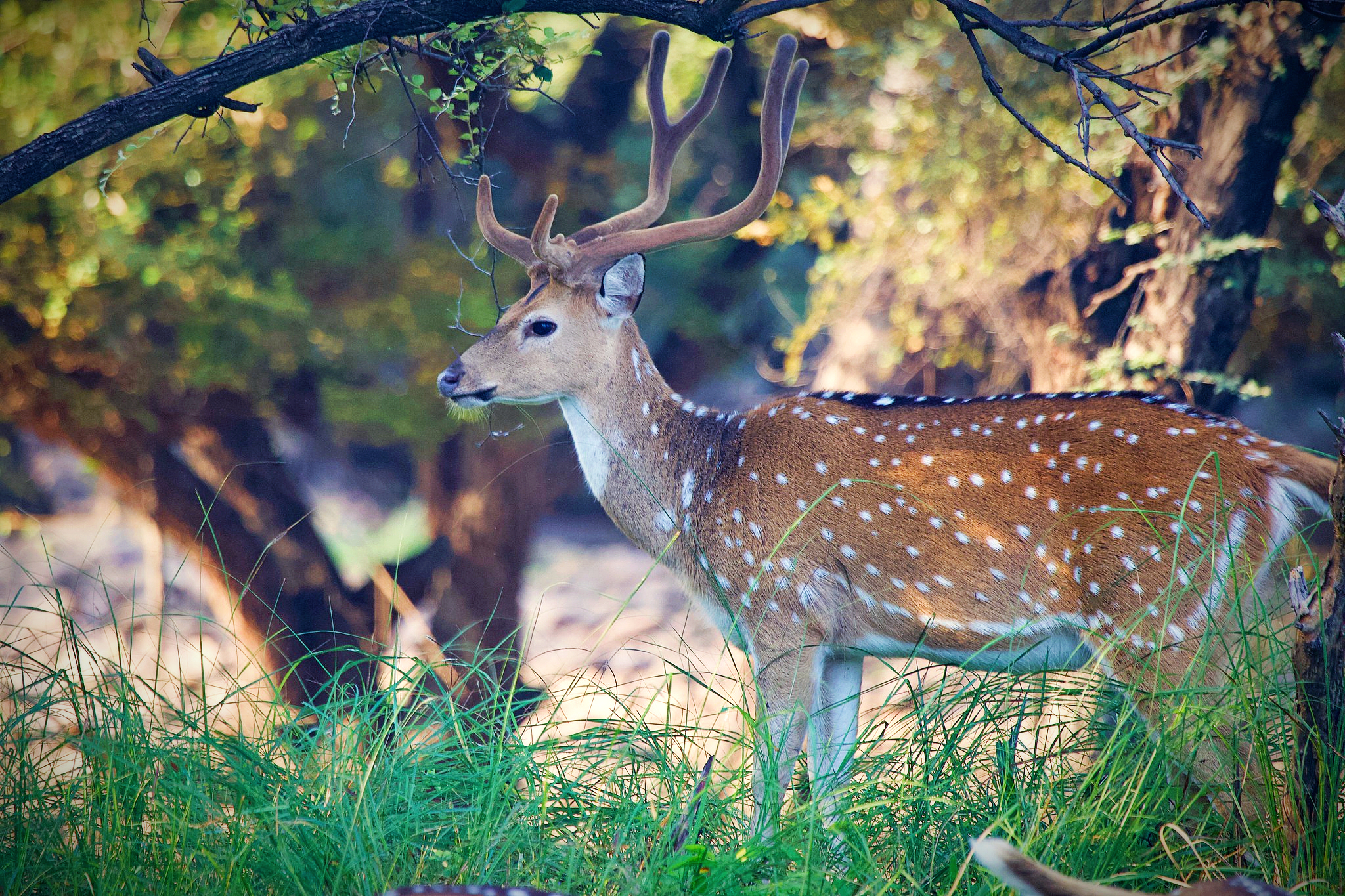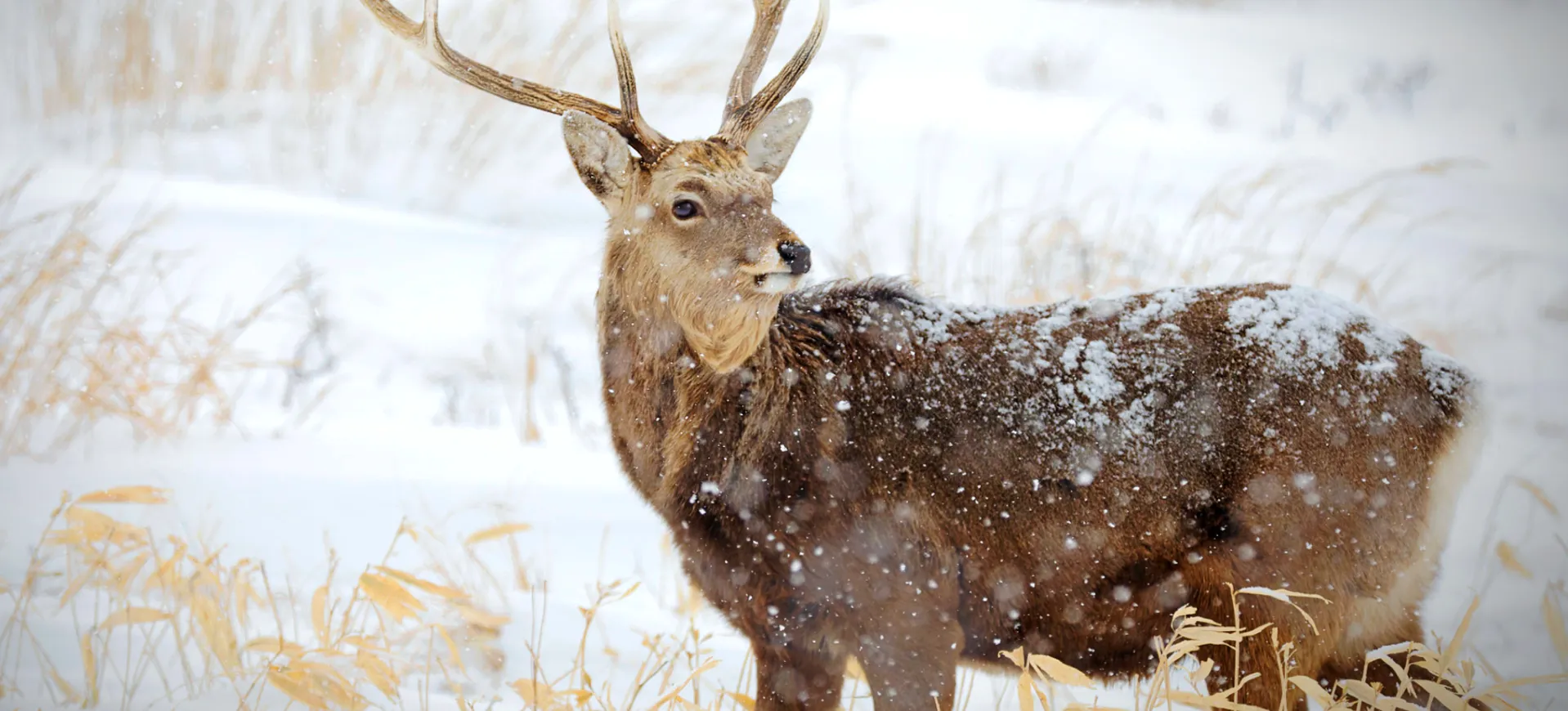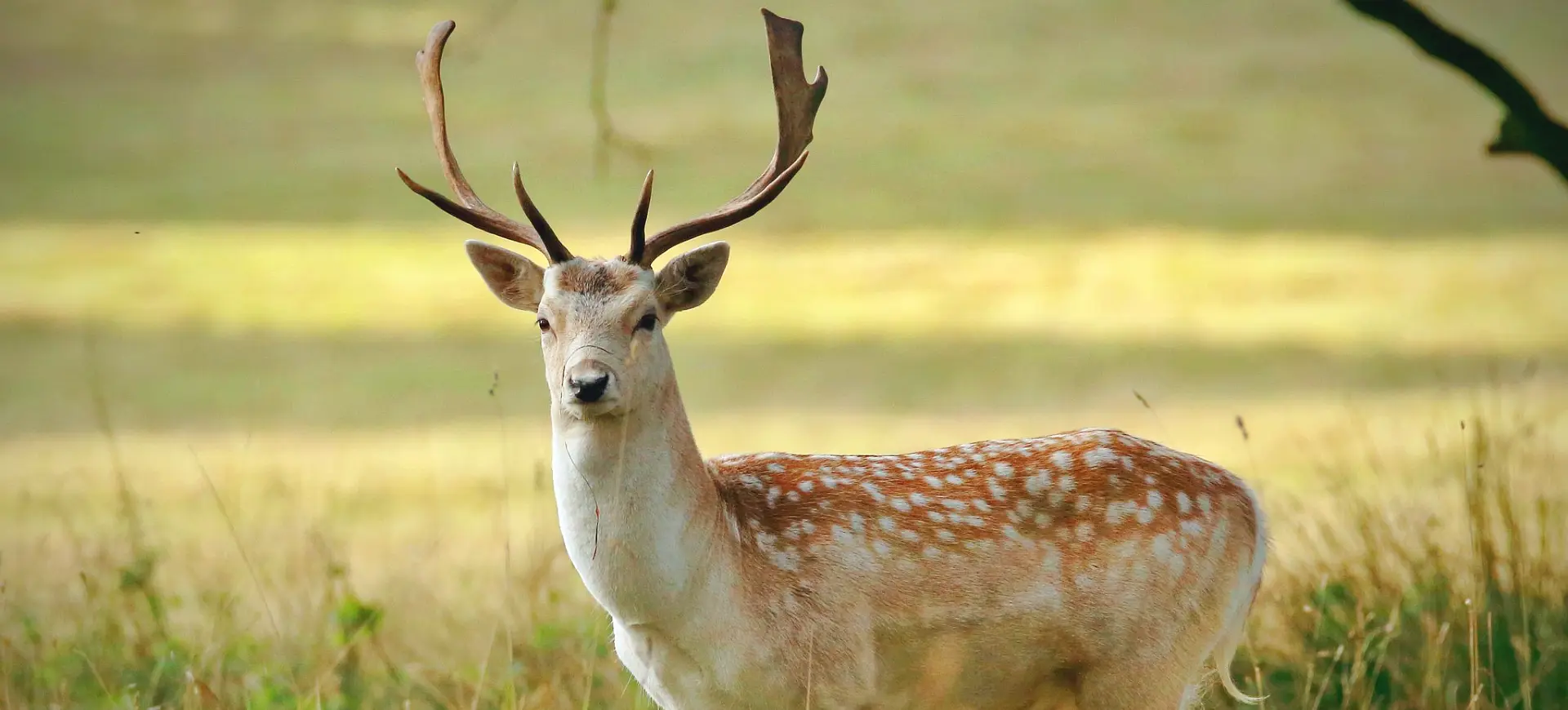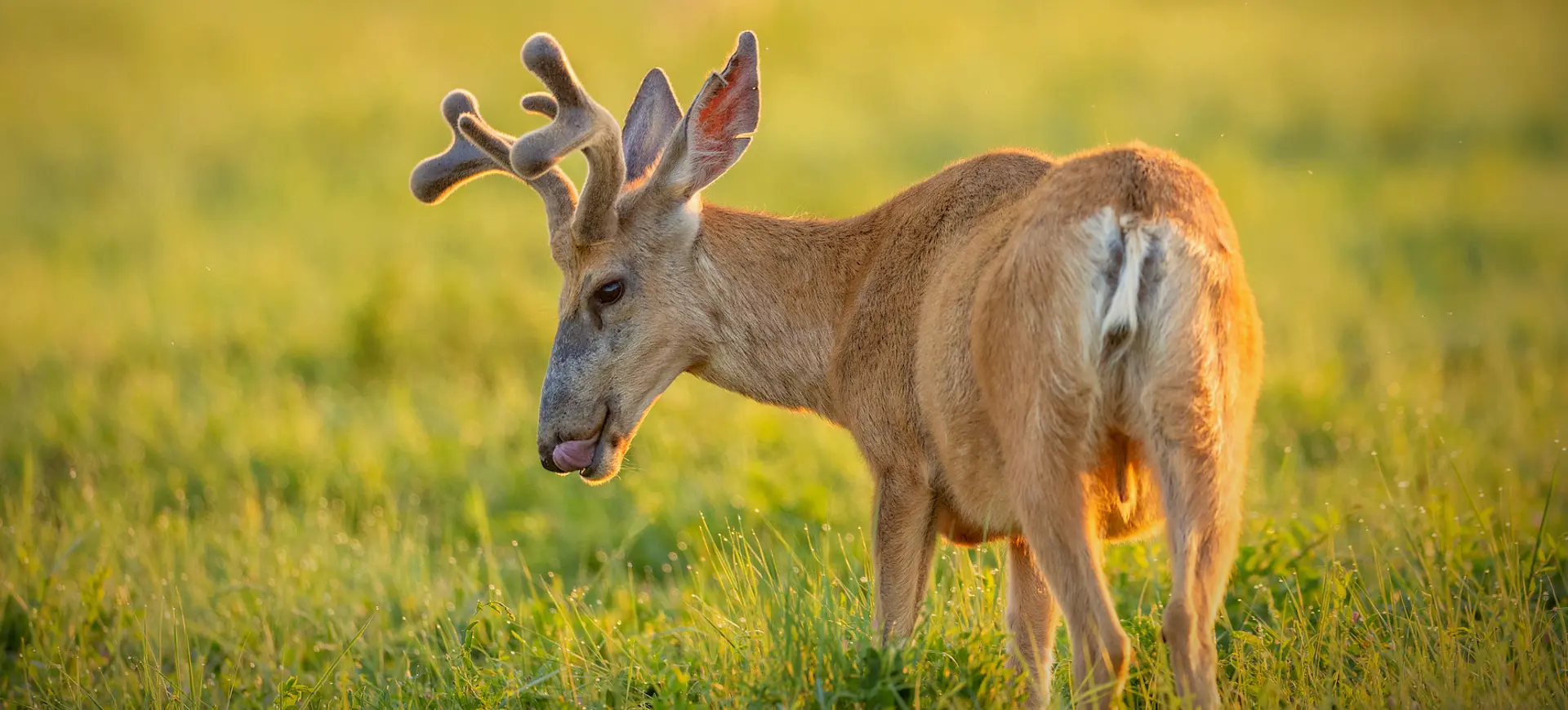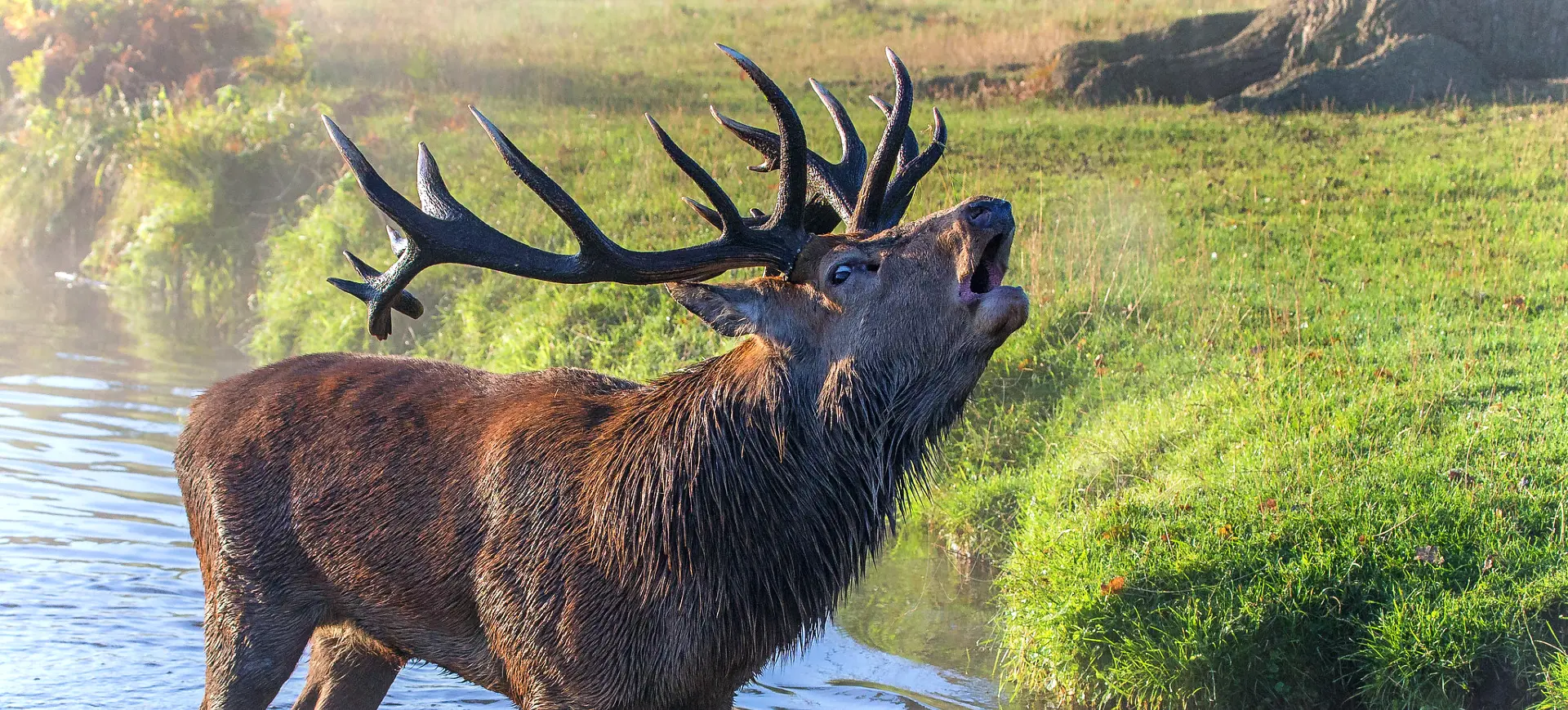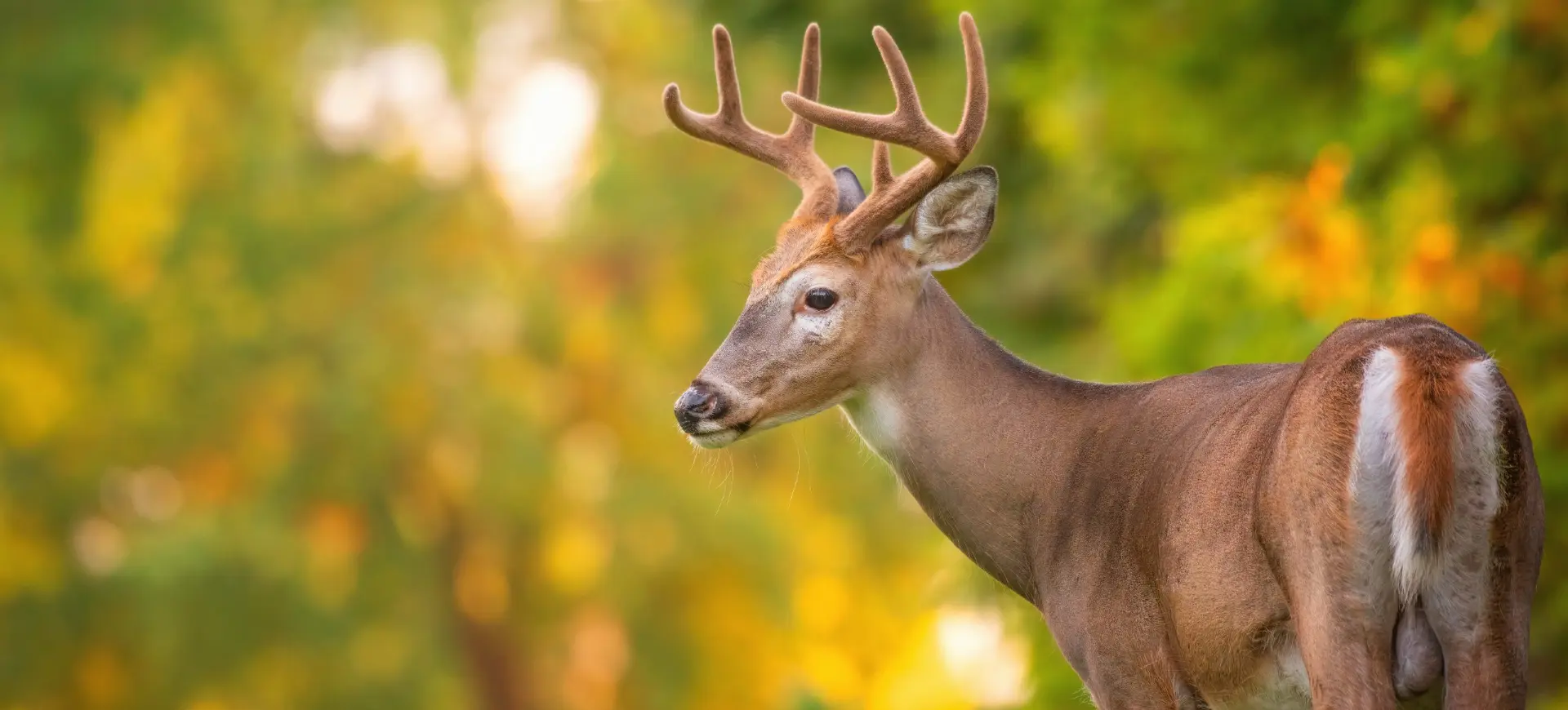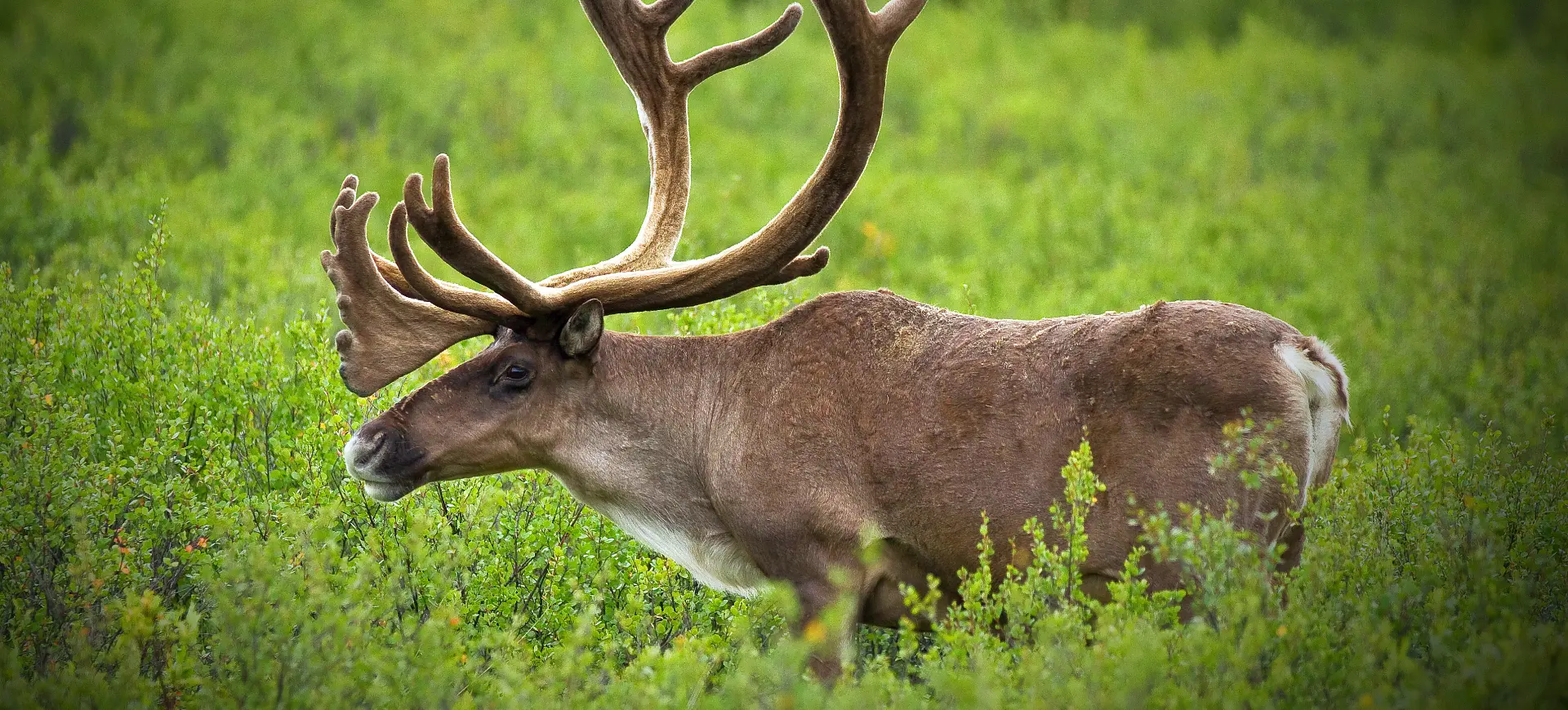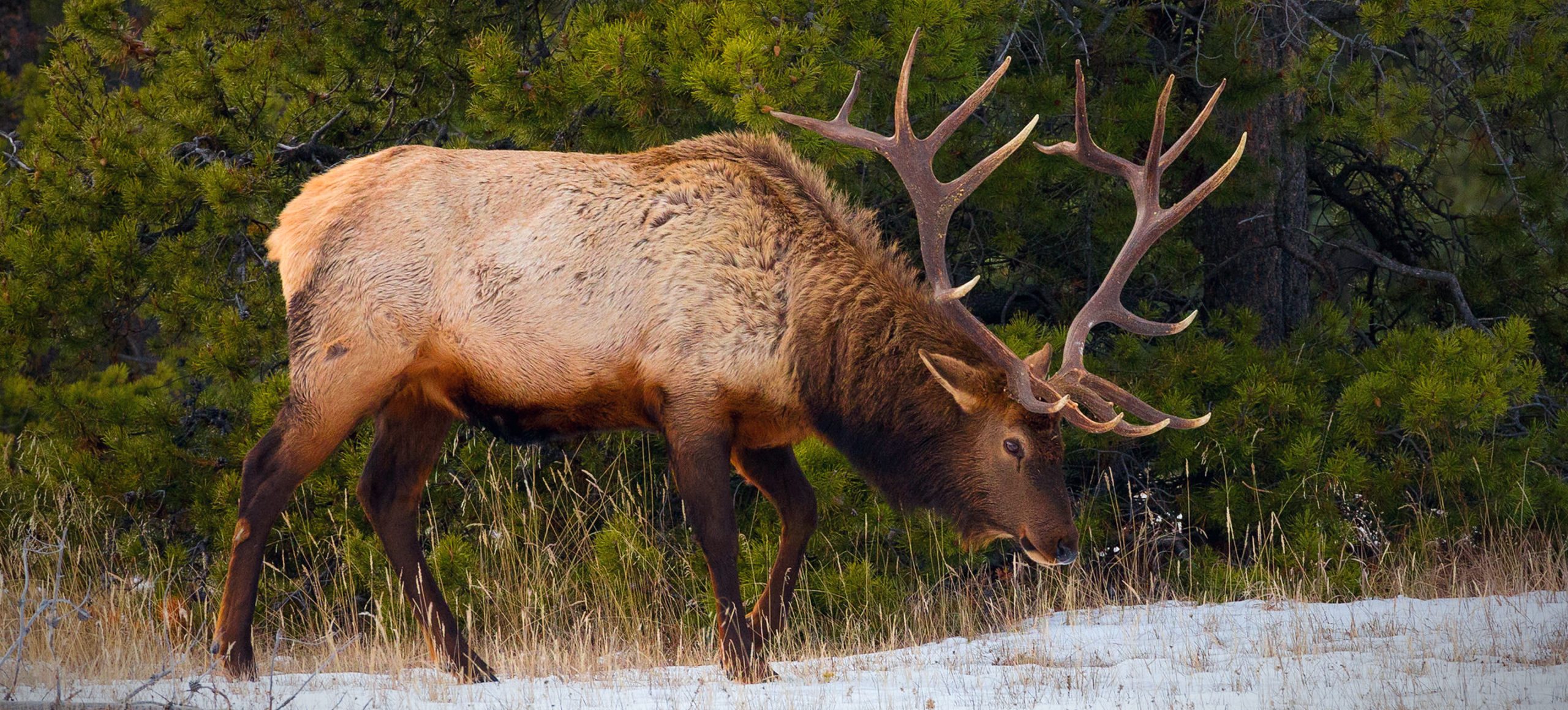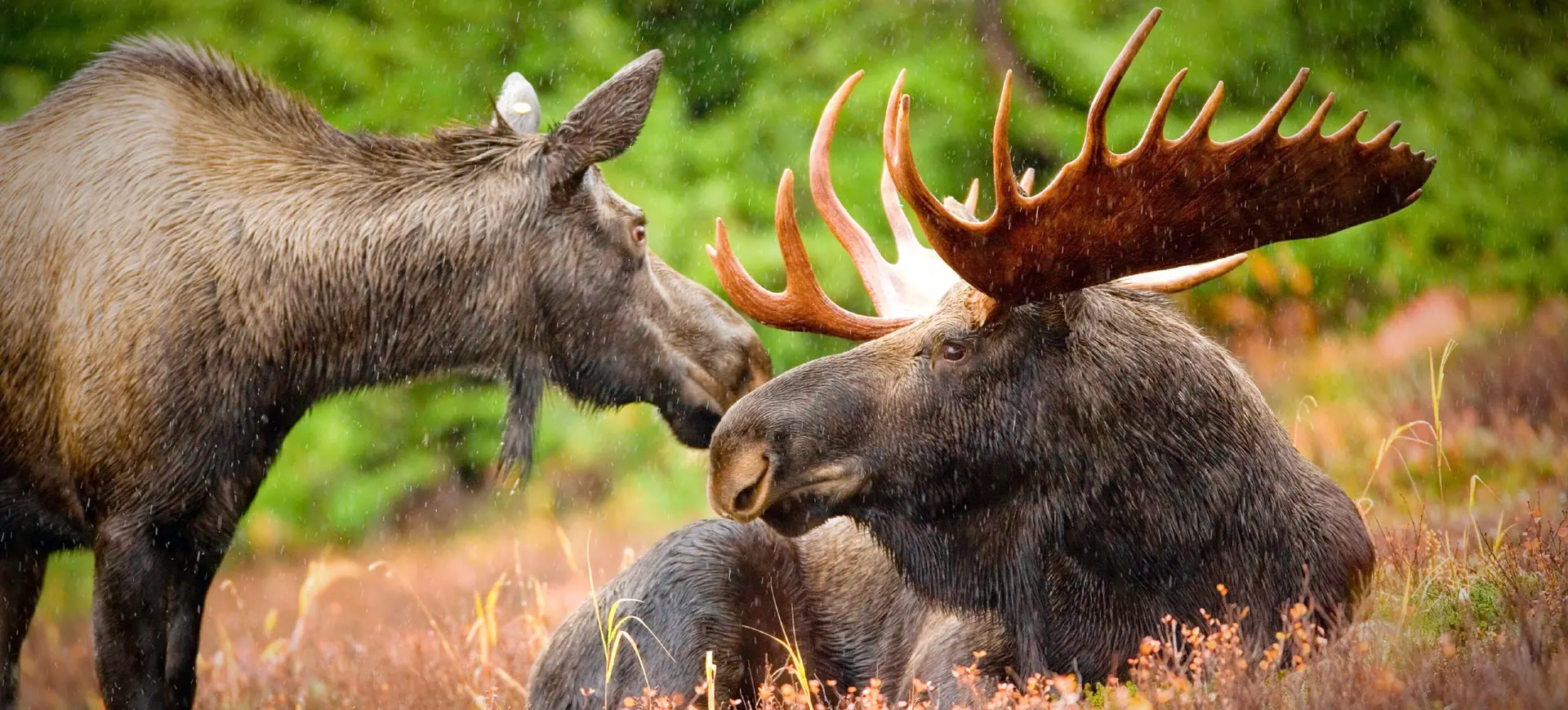Overview
The Northern Red Muntjac, or Muntiacus vaginalis, is a small deer species native to Southeast Asia. This elusive animal is characterized by its reddish-brown fur, which provides camouflage in its forest habitats. Males are distinguished by their short antlers, shed annually, and long canine teeth that protrude from their mouths, used during fights for territory and mates. The species is adaptable, inhabiting a range of forest types from tropical rainforests to evergreen and mixed deciduous forests, demonstrating a remarkable ability to thrive in diverse environments.
The Northern Red Muntjac is primarily solitary, with individuals establishing their territories, which they mark with scent from glands near their eyes, feet, and hind legs. Their omnivorous diet, consisting of fruits, shoots, seeds, and occasionally small animals, showcases their flexible feeding habits. This deer is known for its distinctive bark-like call, used as an alarm signal or to communicate with other muntjacs, which can be heard over long distances. Despite its small size, the Northern Red Muntjac plays a significant role in its ecosystem by dispersing seeds and providing prey for larger predators.
Conservation efforts for the Northern Red Muntjac are complicated by habitat loss and hunting pressures. However, the species shows resilience and has been found in secondary forests and plantations, indicating its adaptability to human-altered landscapes. Its presence across a wide range indicates a species that, while facing challenges, continues to maintain viable populations in certain areas, making it a species of interest for conservationists and researchers alike.
Taxonomy
Kingdom
Phylum
Class
Order
Family
Genus
Species
Sub Species
Type
Physical Description:
The Northern Red Muntjac is a small-sized deer, with adults exhibiting a reddish-brown fur coat that blends seamlessly into their forested environments. Males possess short, sharp antlers atop long pedicles, unique features among their genus and pronounced canine teeth that serve as weapons in disputes. Their body is compact and muscular, adapted for moving through dense vegetation, with a slight sexual dimorphism where males are slightly larger and more robust than females.
The species’ eyes and ears are large, adaptations that enhance their ability to detect predators in the dense undergrowth of their habitats. The physical attributes of the Northern Red Muntjac allow it to navigate its environment with agility and stealth.

Lifespan: Wild: ~10 Years || Captivity: ~16 Years

Weight: Male & Female: 33-55 lbs (15-25 kg)

Length: Male & Female: 35-41 in (90-105 cm)

Height: Male & Female: 18-20 in (45-50 cm)

Top Speed: 18 mph (29 km/h)
Characteristic:
Native Habitat:
The Northern Red Muntjac is native to Southeast Asia, with a range that includes diverse forested environments from lowland rainforests to montane regions. These habitats provide the dense cover and varied diet the muntjac relies on for survival. Their adaptability to different forest types is a testament to their ecological versatility, making them a common species across their range.
The species thrives in environments that offer various vegetation types, including primary and secondary forests, bamboo thickets, and scrub areas. The ability to inhabit secondary forests and areas affected by human activity indicates a degree of resilience but also highlights the ongoing threat of habitat loss. The Northern Red Muntjac’s habitat preferences underline the importance of forest conservation efforts in maintaining biodiversity in Southeast Asian ecosystems.
Biomes:
Biogeographical Realms:
Continents:
Diet:
Diet & Feeding Habits:
The Northern Red Muntjac is an omnivore with a diet that reflects the biodiversity of its habitat. It feeds on various plant materials, including leaves, fruits, shoots, bark, small animals, and eggs, when available. This dietary flexibility allows it to exploit a wide range of food sources, contributing to its ability to survive in various forest types. The muntjac plays a crucial role in its ecosystem as a seed disperser, aiding in the regeneration of its forest habitat.
Feeding habits of the Northern Red Muntjac vary seasonally, with individuals adapting their diet based on the availability of food resources. They feed heavily on fruit during the wet season while shifting to more leaf-based diets in the dry season. Their complex stomach facilitates their ability to digest various plant materials, typical of ruminants, allowing efficient nutrient extraction. The muntjac’s feeding behavior has implications for forest composition and structure, as their preferences can influence the prevalence of certain plant species.
Mating Behavior:
Mating Description:
The Northern Red Muntjac has a unique mating system characterized by year-round breeding, with no specific mating season. Males are territorial and defend their areas vigorously against rivals, using their antlers and canines in combat. The presence of multiple females within a male’s territory allows for opportunities to mate at any time of the year, reflecting the species’ adaptive reproductive strategy. Vocalizations play a significant role in mating behaviors, with males emitting calls to attract females and deter rivals.
Females of the species can conceive at any time, leading to a continuous potential for population growth. The gestation period lasts about six months, after which a single fawn is usually born. These fawns are precocial and able to move around shortly after birth, which enhances their survival in predator-rich environments. Themuntjac’s reproductive flexibility is key to maintaining population numbers despite environmental pressures.
Reproduction Season:
Birth Type:
Pregnancy Duration:
Female Name:
Male Name:
Baby Name:
Social Structure Description:
The Northern Red Muntjac is primarily solitary, with individuals maintaining their territories throughout the year. Males establish territories they defend against other males, using scent marking and vocalizations to communicate their presence. Females, on the other hand, have smaller home ranges that often overlap with those of males and other females. This social structure allows for flexibility in mating and resource use, adapting to the varying conditions of their habitats.
Interactions between muntjacs are most commonly observed during mating attempts or when individuals encounter each other at feeding sites. Despite their solitary nature, muntjacs maintain a complex communication system involving scent marks, vocal calls, and body language, which helps to reduce conflicts and facilitate mating. The social dynamics of the Northern Red Muntjac reflect their adaptability and resilience in facing environmental challenges.
Groups:
Conservation Status:
Population Trend:
The primary threats to the Northern Red Muntjac include habitat loss due to agricultural expansion, logging, and infrastructure development. These activities reduce the availability of suitable living spaces and food resources, impacting population health and stability. Hunting for meat and traditional medicine poses a significant threat, with muntjacs being favored due to their size and perceived abundance.
In addition to direct threats from humans, the Northern Red Muntjac faces competition from domestic livestock and other wildlife for food and space, further stressing their populations. Climate change introduces additional challenges, with shifts in vegetation and water availability potentially altering their habitats in unpredictable ways. Conservation efforts must address these multifaceted threats to ensure the species’ survival.
Population Threats:
The primary threats to the Northern Red Muntjac include habitat loss due to agricultural expansion, logging, and infrastructure development. These activities reduce the availability of suitable living spaces and food resources, impacting population health and stability. Hunting for meat and traditional medicine poses a significant threat, with muntjacs being favored due to their size and perceived abundance.
In addition to direct threats from humans, the Northern Red Muntjac faces competition from domestic livestock and other wildlife for food and space, further stressing their populations. Climate change introduces additional challenges, with shifts in vegetation and water availability potentially altering their habitats in unpredictable ways. Conservation efforts must address these multifaceted threats to ensure the species’ survival.
Conservation Efforts:
Conservation strategies for the Northern Red Muntjac focus on habitat protection and hunting regulation. Establishing and enforcing protected areas is crucial in preserving the species’ natural habitats, while anti-poaching efforts help curb illegal hunting. Community-based conservation programs involving local populations in wildlife protection have shown promise in promoting sustainable coexistence.
Research and monitoring are also key components of conservation efforts, providing data on population trends, habitat usage, and the effectiveness of protection measures. Conservation organizations and governments are working together to implement strategies that balance human needs with wildlife conservation, aiming to secure a future for the Northern Red Muntjac and the ecosystems they inhabit.
Additional Resources:
Fun Facts
- The Northern Red Muntjac is also known as the “barking deer” due to its dog-like alarm calls.
- Males use their elongated canine teeth, not just their antlers when fighting for territory or mates.
- This species can breed throughout the year, a rare trait among deer.
- Despite their small size, muntjacs can make large leaps to escape predators.
- The Northern Red Muntjac has a highly developed sense of smell, which is used for communication and detecting predators.
- They are excellent swimmers, often crossing rivers and streams within their territories.
- Muntjacs have a unique way of moving through dense underbrush, using paths made by other forest animals.
- They can live near human settlements, adapting to landscapes altered by agriculture.
- The gestation period for a muntjac is about six months, after which a single fawn is usually born.
- Muntjac fawns are born with spots, which they lose as they mature.









